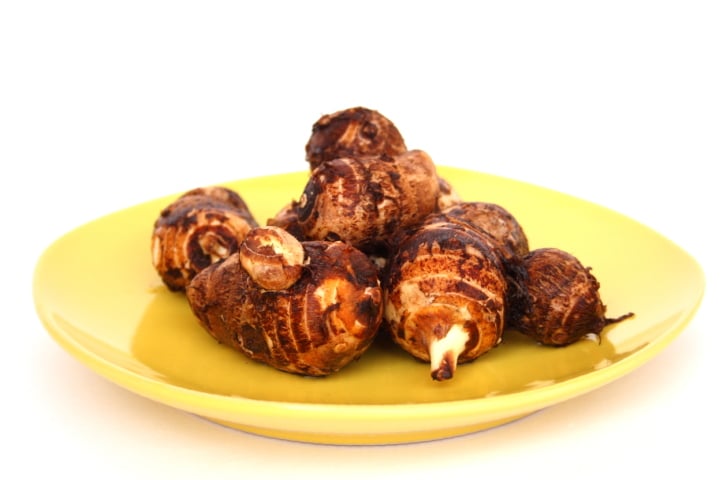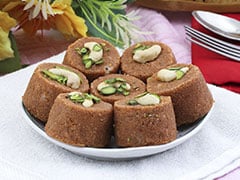Story ProgressBack to home
Colocasia(अरबी)
Hindi Name:अरबी
Arbi or Taro, is thought to be the oldest cultivated plant in the world, being cultivated in Asia for more than ten thousand years. They are herbaceous perennial plants. They have a close resemblance to potatoes. There are various varieties of colocasia available like eddo, dasheen, elephant's ear etc.
- NDTV Food
- Nov 21 2014 13:07 IST
 Arbi or Taro, is thought to be the oldest cultivated plant in the world, being cultivated in Asia for more than ten thousand years. They are herbaceous perennial plants. They have a close resemblance to potatoes. There are various varieties of colocasia available like eddo, dasheen, elephant's ear etc. It has a brownish exterior with rings and a creamish flesh. In India, both the starchy root and the leaves are used in cooking.
Arbi or Taro, is thought to be the oldest cultivated plant in the world, being cultivated in Asia for more than ten thousand years. They are herbaceous perennial plants. They have a close resemblance to potatoes. There are various varieties of colocasia available like eddo, dasheen, elephant's ear etc. It has a brownish exterior with rings and a creamish flesh. In India, both the starchy root and the leaves are used in cooking.
This starchy plant has a similar flavor like the potatoes and is commonly eaten with rice or paranthas. When cooked it tastes somewhat meaty and mildly sweet.
Usage
Almost all parts of the taro plant are used for cooking in different parts of the India, but in many countries the stems and leaves are not consumed. The thick stems of arbi are used to make different kinds of vegetables whereas its leaves and stems are mostly used to make pickles and chips. Badi, a very common food item is made by mixing the stems and leaves of the arbi plant with black lentil and drying it. While cooking, many have complained of an itching sensation while peeling the roots of arbi with bare hands. It can be made into cutlets and in similar ways like the potato is cooked.
Nutritional Value
1. High in carbohydrates and helps boost energy levels.
2. It is a source of dietary fiber that helps against heart diseases.
3. It is also rich in vitamin E that works as an antioxidant.
4. Regulated consumption of taro gives the body required amount of potassium and helps maintain the blood pressure.
5. It does not contain any saturated or trans fats.
6. It is a great source of fiber but contain more calories than potatoes.








